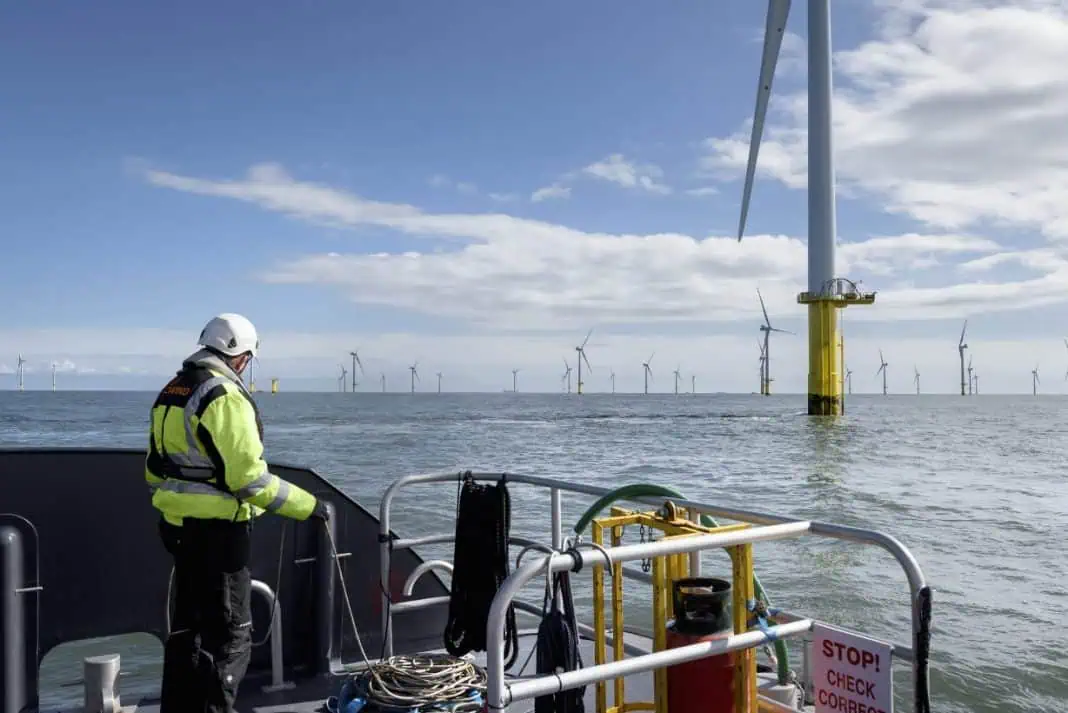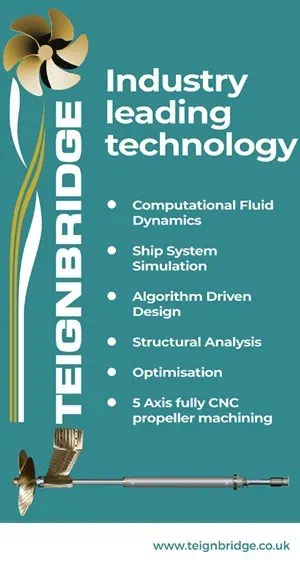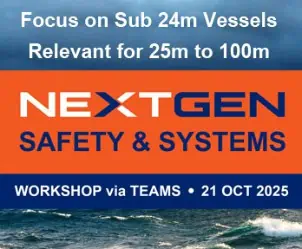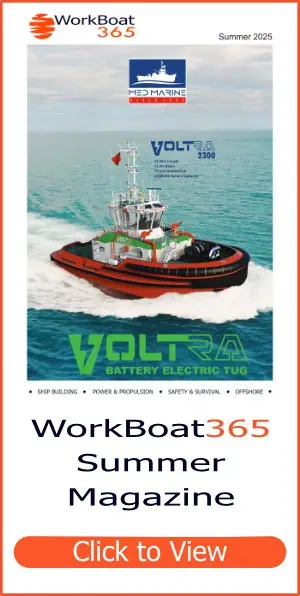Author: Iain Green, Sales Manager, CWind
Ambitious environmental targets from governments around the world, including Germany’s 20GW by 2030, and the UK’s commitment to 40GW by 2030, are accelerating the growth of offshore renewables and in particular, offshore wind, which is set to skyrocket over the next decade.
When the first offshore wind farm was constructed in the early 1990s, there was a real sense of hopefulness for this innovative technology, and whilst that feeling hasn’t dissipated, there is now a strong understanding of the challenges each offshore structure brings with it. As offshore wind farms are planned ever larger and further from shore, it is absolutely critical that the learnings taken from each new development are considered to continuously improve processes, assets, and technology.
Protecting offshore structures from corrosion
Reports show the offshore wind industry is set to grow to 234GW capacity globally by 2030. A recent report published by the Global Wind Energy Council found that the key to this exponential growth is turbine technology, which will improve both asset efficiency and resilience, resulting in Levelised Cost of Energy (LCOE) reductions and increased adoption.
Funding the research and development of new turbines makes up part of the €26.3 billion invested in European wind farms in 2020, a 330% increase on 2019’s figures, which totalled €6.4 billion to fund four offshore wind farms.
As offshore wind turbine foundations represent 30% of the cost of a wind farm, it stands to reason that a large amount of emphasis should be placed on protecting these assets from degradation. With investors keen to realise a return on these significant investments, it is more important than ever to ensure the prolonged lifetime of the wind farm assets through active protection and maintenance.
As a leading provider of project services and CTVs to the offshore wind industry, with a strong track record in cathodic protection projects, CWind understands the marine environment and has the expertise to deliver corrosion prevention solutions.
‘Over the last decade, CWind, which has a strong track record of successful corrosion protection campaigns, has seen a rise in the number of instances of corrosion caused by equipment failures or through the installation of the subsea cables’
In order to reduce the risk of expense or asset downtime due to corrosion, it is vital that asset owners realise the importance of long-lasting cathodic protection, and a trustworthy company to carry out these preventative measures. The benefits of this initial investment in corrosion protection will be realised long after installation works are complete.
Relentless efficiency and optimisations in offshore wind have helped drive the LCOE down to record lows, but occasionally these changes introduce additional challenges. One result of these reductions is the transition from external “J” tubes to routing cables into the transition piece through aperture holes cut into the primary steel.
Whilst this allows considerable CAPEX savings during construction, it can introduce a leak path from the (typically uncoated interior) of the monopole to the wider ocean, in turn allowing corrosion to occur, which reduces the safe lifespan of the structure considerably.
Leveraging experience of subsea cables from the wider Global Marine Group, and their in-house engineering team, CWind has worked with their clients to deliver targeted solutions to these issues.
In recent years, CWind has installed retrofit internal cathodic protection systems to address the problems caused by leaks within the monopile, with great success.
One example of this was at Gwynt Y Môr (GYM) offshore wind farm, where a number of the cable entry sealing systems had been leaking, resulting in fluctuating water levels inside the monopoles, which compromised the internal corrosion protection systems. A retrofit internal cathodic protection system was required to address these problems and CWind was chosen to supply and install Impressed Current Cathodic Protection (ICCP) systems in the three assets affected by this issue. With CWind’s ability to bring extensive resource to the project, supplying the hardware, software, equipment and experienced personnel, the project was a success.
This swift action saved any further degradation to the primary steel structure, allowing generation to continue, the design life to be maintained, and the possibility of further life extension later, should this be in the client’s commercial interests.
Most recently, in Summer 2021, CWind commenced installation of retrofit internal cathodic protection systems within 39 turbines split across two North Sea wind farms.
In a race to reduce the LCOE and shorten the construction timeline for offshore wind farms, many wind farm owners could see a rise in degradation of assets due to changing processes within the installation and commissioning of the wind farm.
In order to prevent any asset downtime due to corrosion and associated damages, asset owners must identify any at-risk assets and take appropriate steps from the initial installation phase onwards, in order to prevent future expenses far higher than the cost of installing pre-emptive or retrofit cathodic protection systems.
By working with experienced, reliable contractors like CWind, asset owners can identify and reduce the likelihood of corrosion to their offshore structures, and produce an asset management plan to ensure cost-effective and dependable preventative measures.

Inspections, maintenance & repair for the lifetime of an asset
Typically, as assets age, offshore maintenance costs increase. Currently, with a significant number of offshore wind assets entering the later stages of the project lifecycle, it is evident that balance of plant degradation is a growing industry challenge.
Optimising efficiencies and maintaining the structural elements which support the wind turbine generator is crucial to ensure asset life is maximised. Without regularly scheduled maintenance and inspections offshore wind assets can deteriorate, causing faults requiring reactive maintenance leading to unplanned downtime and loss of revenue.
It is critical that inspections are performed by experienced, methodical experts alert to every detail. The implications if a wind turbine is offline for unscheduled maintenance can exceed £10,000 in lost revenue a day, and when factoring in the additional costs of support vessels, technicians, and equipment for repairs it could run into the millions.
For large-scale wind turbine assets and auxiliary equipment, unaddressed minor problems or oversights can quickly escalate into costly stoppages, lost revenue, and expensive repairs.
With experience carrying out topside and subsea inspection, maintenance, and repair at 14 wind farms to date, CWind understand the significance of regular proactive maintenance, as well as the importance of mobilising quickly when unplanned maintenance or repairs are required.
CWind is on hand for both scheduled and unscheduled maintenance with fully trained technicians for turbine, cable, and foundation maintenance, utilising a dedicated fuel-efficient fleet of purpose-built CTVs; and a range of specialist assets and equipment, all the elements required to complement OEM contracts in one bespoke package.
This offering has been vital at Westermost Rough Offshore Wind Farm, where CWind is currently carrying out a 20-year maintenance, emergency response, and asset management contract, including completing mechanical and electrical maintenance, inspections and corrosion protection works.











